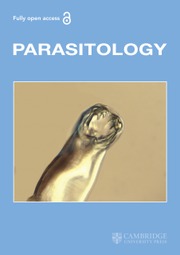Article contents
Commentary on ‘A Candide response to Panglossian accusations by Randolph and Dobson: biodiversity buffers disease’ by Dr R. Ostfeld (Parasitology 2013, in press)
Published online by Cambridge University Press: 29 May 2013
Extract
We are disappointed with Ostfeld's parochial commentary (Ostfeld, 2013) because we hoped we had addressed the dilution theory debate from a wider perspective, taking into account studies beyond those originating in New York State (Randolph & Dobson, 2012). We emphasized the inherent variability in the effects of biodiversity on the risk of zoonotic disease, noting explicitly that Ostfeld's own work allowed for positive, neutral and negative outcomes depending on the precise circumstances and biological interactions. The wider the range of studies, the greater the evidence for neutral and positive outcomes (i.e. biodiversity may have no effect or exacerbate infection risk) as the literature bias is gradually overcome. Publication bias, however, may still persist and be identified by appropriate meta-analyses (Salkeld et al., 2013).
Information
- Type
- Commentary
- Information
- Copyright
- Copyright © Cambridge University Press 2013
References
REFERENCES
A correction has been issued for this article:
- 8
- Cited by
Linked content
Please note a has been issued for this article.

